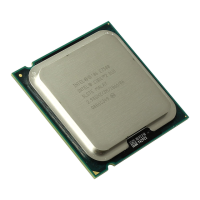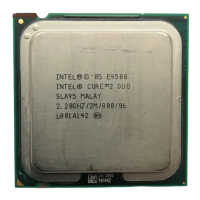4-59
BUS OPERATION
AHOLD Snoop to the Same Line that is being Filled
A system snoop does not cause a write-back cycle to occur if the snoop hits a line while the line
is being filled. The processor does not allow a line to be modified until the fill is completed (and
a snoop only produces a write-back cycle for a modified line). Although a snoop to a line that is
being filled does not produce a write-back cycle, the snoop still has an effect based on the follow-
ing rules:
1. The processor always snoops the line being filled.
2. In all cases, the processor uses the operand that triggered the line fill.
3. If the snoop occurs when INV = “1”, the processor never updates the cache with the fill
data.
4. If the snoop occurs when INV = “0”, the processor loads the line into the internal cache.
4.4.3.3 Snoop During Replacement Write-Back
If the cache contains valid data during a line fill, one of the cache lines may be replaced as deter-
mined by the Least Recently Used (LRU) algorithm. Refer to Chapter 6, “Cache Subsystem” for
a detailed discussion of the LRU algorithm. If the line being replaced is modified, this line is writ-
ten back to maintain cache coherency. When a replacement write-back cycle is in progress, it
might be necessary to snoop the line that is being written back. (See Figure 4-41.)
